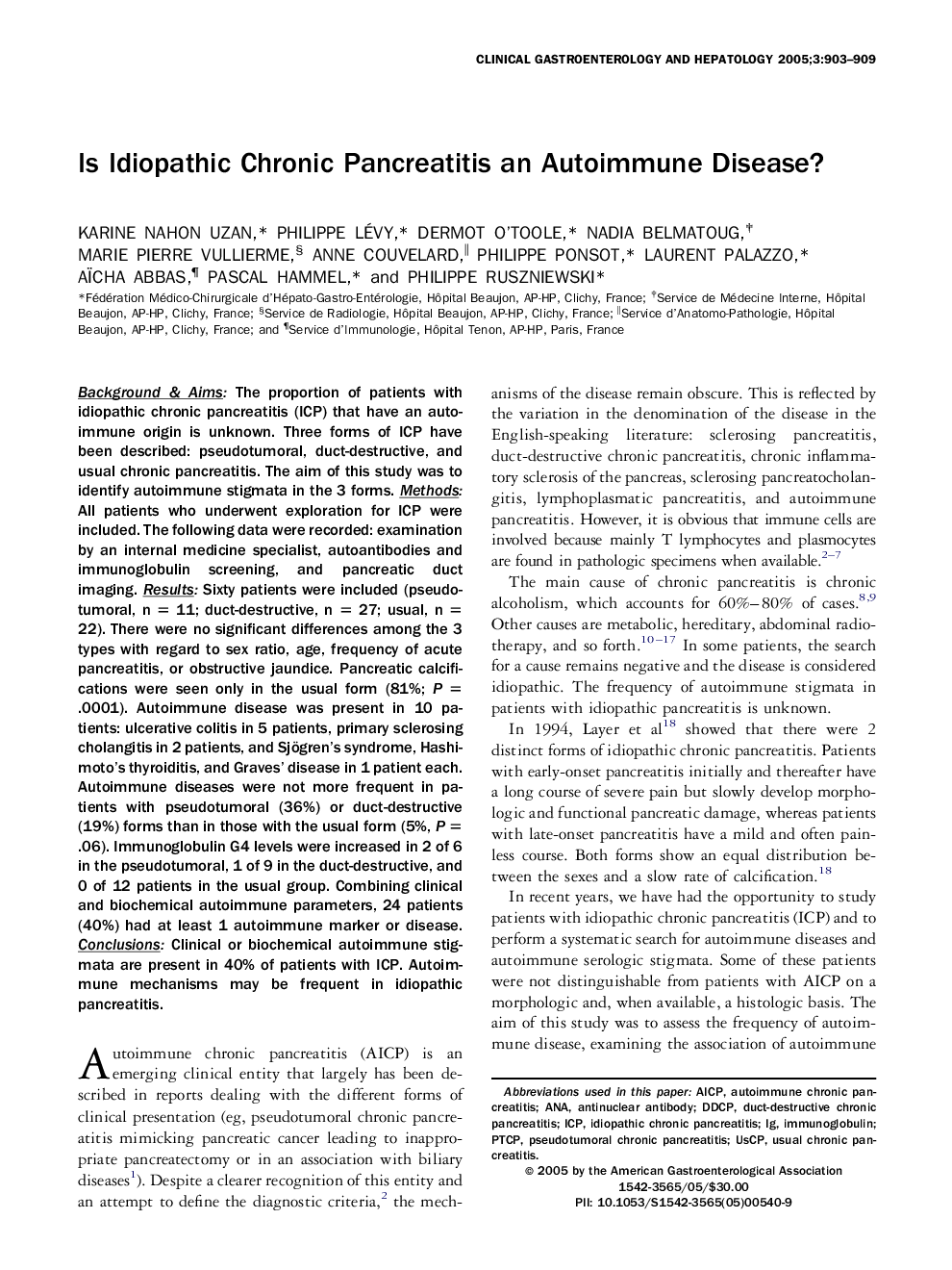| Article ID | Journal | Published Year | Pages | File Type |
|---|---|---|---|---|
| 9241676 | Clinical Gastroenterology and Hepatology | 2005 | 7 Pages |
Abstract
Background & Aims: The proportion of patients with idiopathic chronic pancreatitis (ICP) that have an autoimmune origin is unknown. Three forms of ICP have been described: pseudotumoral, duct-destructive, and usual chronic pancreatitis. The aim of this study was to identify autoimmune stigmata in the 3 forms. Methods: All patients who underwent exploration for ICP were included. The following data were recorded: examination by an internal medicine specialist, autoantibodies and immunoglobulin screening, and pancreatic duct imaging. Results: Sixty patients were included (pseudotumoral, n = 11; duct-destructive, n = 27; usual, n = 22). There were no significant differences among the 3 types with regard to sex ratio, age, frequency of acute pancreatitis, or obstructive jaundice. Pancreatic calcifications were seen only in the usual form (81%; P = .0001). Autoimmune disease was present in 10 patients: ulcerative colitis in 5 patients, primary sclerosing cholangitis in 2 patients, and Sjögren's syndrome, Hashimoto's thyroiditis, and Graves' disease in 1 patient each. Autoimmune diseases were not more frequent in patients with pseudotumoral (36%) or duct-destructive (19%) forms than in those with the usual form (5%, P = .06). Immunoglobulin G4 levels were increased in 2 of 6 in the pseudotumoral, 1 of 9 in the duct-destructive, and 0 of 12 patients in the usual group. Combining clinical and biochemical autoimmune parameters, 24 patients (40%) had at least 1 autoimmune marker or disease. Conclusions: Clinical or biochemical autoimmune stigmata are present in 40% of patients with ICP. Autoimmune mechanisms may be frequent in idiopathic pancreatitis.
Related Topics
Health Sciences
Medicine and Dentistry
Gastroenterology
Authors
Karine Nahon Uzan, Philippe Lévy, Dermot O'Toole, Nadia Belmatoug, Marie Pierre Vullierme, Anne Couvelard, Philippe Ponsot, Laurent Palazzo, AÏcha Abbas, Pascal Hammel, Philippe Ruszniewski,
